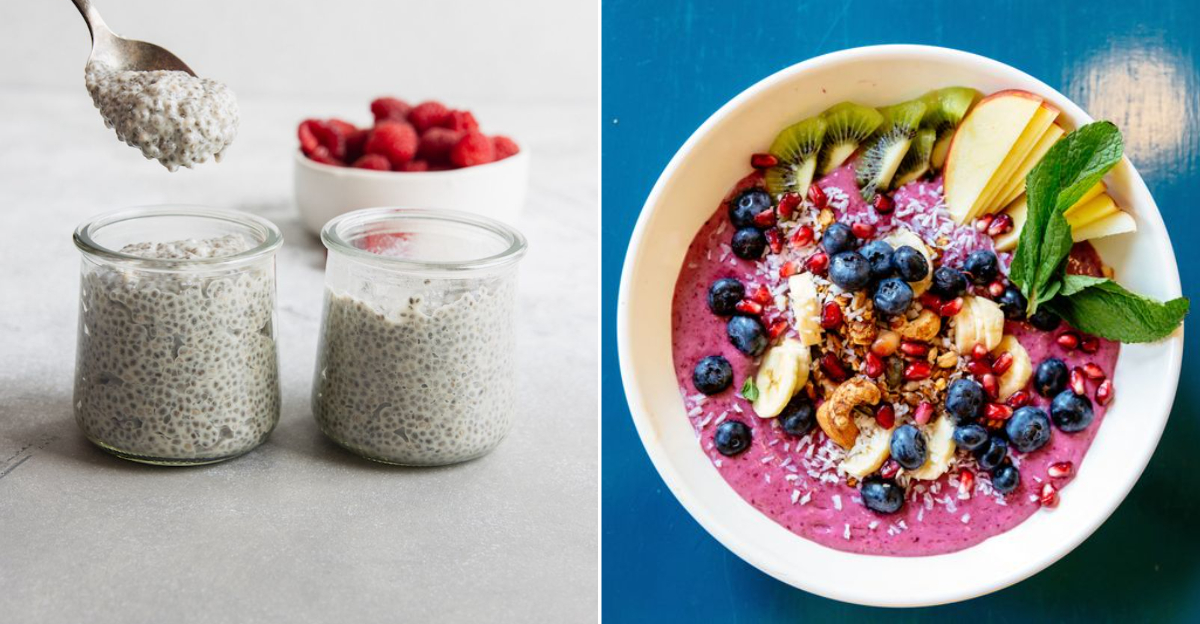10 Trendy Superfoods You Might Want To Skip

Superfoods often arrive with bold claims and flashy packaging, promising to boost your health, energy, and maybe even your mood.
But not every trendy bite lives up to the hype. Some are more about marketing than actual magic, and others just leave your wallet lighter without doing much else.
Before you blend, sprinkle, or snack your way through the latest craze, it might be worth taking a closer look at what’s really going on behind the buzz.
1. Kale: The Dethroned Green King
Remember when everyone was putting kale in literally everything? Smoothies, salads, chips – even desserts weren’t safe from this leafy invasion.
Kale does contain vitamins A, K, and C, but its bitter taste makes it hard to enjoy without drowning it in dressing.
Many people buy kale only to let it wilt in their refrigerator drawer because they can’t stand eating it. The tough texture requires serious chewing, and those stems? Nobody has time for that prep work.
2. Spinach: The Everyday Hero
Popeye knew what was up long before superfood lists existed. Spinach delivers similar nutrients to kale but with a milder flavor that blends seamlessly into meals.
The tender leaves require zero prep work – just rinse and enjoy. Iron, folate, and magnesium come packed in each leaf, supporting everything from energy levels to muscle function.
Unlike its showier cousin, spinach plays well with others, disappearing into smoothies without leaving that grassy aftertaste that makes kids (and many adults) scrunch their faces.
3. Acai Berries: The Expensive Purple Disappointment
Instagram made these tiny purple berries famous, but your wallet feels the pain at $10+ per smoothie bowl.
Native to South American rainforests, acai berries lose much of their nutritional value during processing and freezing for export.
Studies show their antioxidant levels aren’t significantly higher than common berries. The purported weight loss benefits?
Largely unproven. That photogenic purple color comes with a hefty price tag and often tons of added sugar to mask the berries’ naturally bitter taste.
4. Blueberries: The Humble Brain Booster
Small but mighty, these little blue dynamos pack more proven health benefits than their exotic counterparts.
Research consistently links blueberry consumption to improved brain function and memory, especially in older adults.
Anthocyanins give blueberries their color and fight inflammation throughout your body. The best part?
They’re available year-round, freeze beautifully, and cost a fraction of trendy berries. Pop them straight into your mouth, no preparation required – nature’s candy with a side of cognitive benefits.
5. Chia Seeds: The Tiny Texture Terrorists
Marketed as omega-3 powerhouses, these tiny seeds transform drinks into slimy science experiments. That gooey texture sends shivers down many spines – like drinking a glass of frog eggs.
While they do contain fiber and some nutrients, the plant-based omega-3s aren’t as bioavailable as animal sources. Your body struggles to convert ALA (in chia) to the more useful EPA and DHA forms.
Many people consume chia seeds but never actually enjoy them, just tolerating the weird mouth-feel for perceived health benefits.
6. Flax Seeds: The Versatile Omega Champion
Ground flaxseeds deliver similar nutritional benefits to chia without turning your smoothie into a gelatinous blob.
They blend completely into baked goods, adding a pleasant nutty flavor that complements rather than dominates.
Lignans in flaxseeds provide unique health benefits, potentially reducing cancer risk according to preliminary studies.
Unlike whole chia seeds, which pass through undigested if not soaked, ground flax readily releases its nutritional goodness. Sprinkle it on oatmeal or yogurt for an instant nutrition boost without weird textures.
7. Goji Berries: The Overpriced Raisins
Tiny shriveled red berries commanding premium prices based largely on exotic origin stories. Taste-wise, they’re reminiscent of slightly tangy raisins with an odd aftertaste that lingers unpleasantly.
Their superfood status stems primarily from traditional Chinese medicine claims rather than robust scientific evidence.
While they do contain some antioxidants, the extraordinary health claims don’t justify their extraordinary price tag.
Many people buy them once, leave the half-eaten package in the pantry for months, then eventually toss it during spring cleaning.
8. Walnuts: The Brain-Shaped Brain Food
Nature has a sense of humor – walnuts actually look like tiny brains and happen to be fantastic for brain health!
These affordable nuts contain more ALA omega-3s than any other nut, plus they’re packed with antioxidants that help fight oxidative stress.
Research shows regular walnut consumption supports cognitive function and may reduce Alzheimer’s risk.
Their satisfying crunch and buttery flavor make them actually enjoyable to eat, not just something you force down for health. Grab a handful as a snack or toss them into salads for texture and nutrition.
9. Coconut Oil
Once hailed as a miracle in a jar, coconut oil has been celebrated for its supposed health benefits, from weight loss to improved brain function.
However, recent studies reveal that it’s primarily composed of saturated fats. This can lead to increased LDL cholesterol, contrary to heart health.
Coconut oil’s allure is undeniable, but its benefits may not be as robust as they seem. While it imparts a tempting flavor, moderation is key. Over-reliance may overshadow the benefits of healthier fats like olive oil.
Did you know? Coconut oil’s popularity surged in the early 21st century, aligning with the global wellness boom.
10. Matcha Powder
The vibrant green of matcha powder is striking, symbolizing purity and focus. Promoters tout it as a source of antioxidants and a calm energy booster, but the reality may be less impressive.
Matcha contains caffeine, which can lead to overstimulation if consumed in excess.
Despite its historic roots in Japanese culture, Western adoption has transformed matcha into a trendy cafe staple.
But is it the elixir of life? Likely not. The benefits are similar to regular green tea but come at a higher cost.
